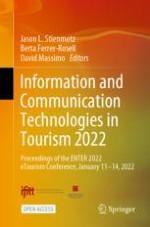
Open Access 2022 | OriginalPaper | Chapter
How to Design Hotel Gamified Applications Effectively: Understanding the Motives of Users as Hotel Visitors
Authors : Demos Parapanos, Elina (Eleni) Michopoulou
Published in: Information and Communication Technologies in Tourism 2022
Publisher: Springer International Publishing
Activate our intelligent search to find suitable subject content or patents.
Select sections of text to find matching patents with Artificial Intelligence. powered by
Select sections of text to find additional relevant content using AI-assisted search. powered by